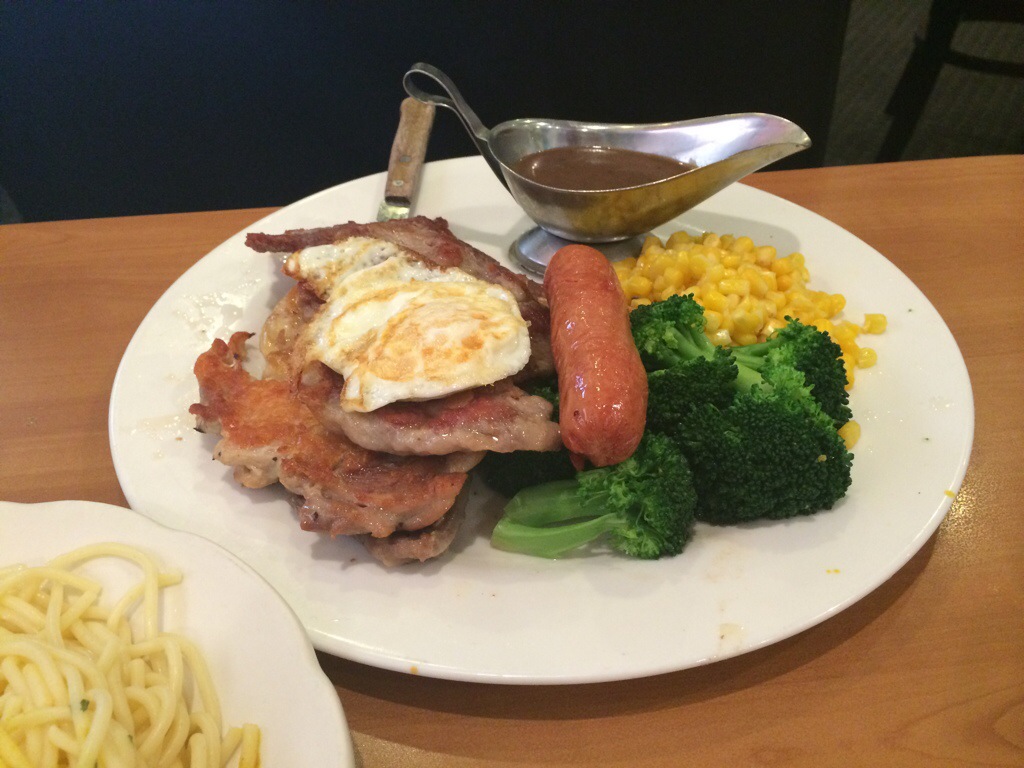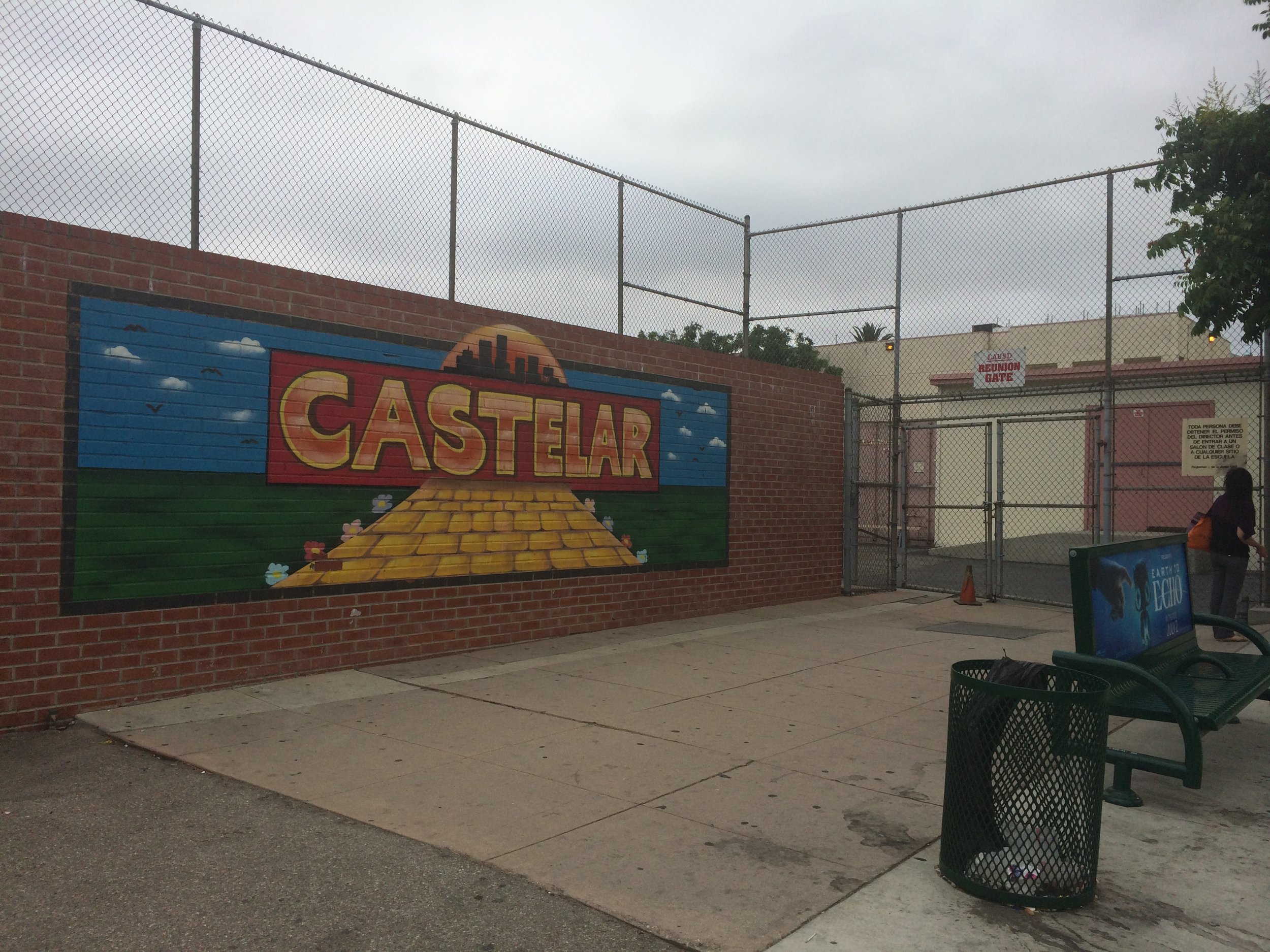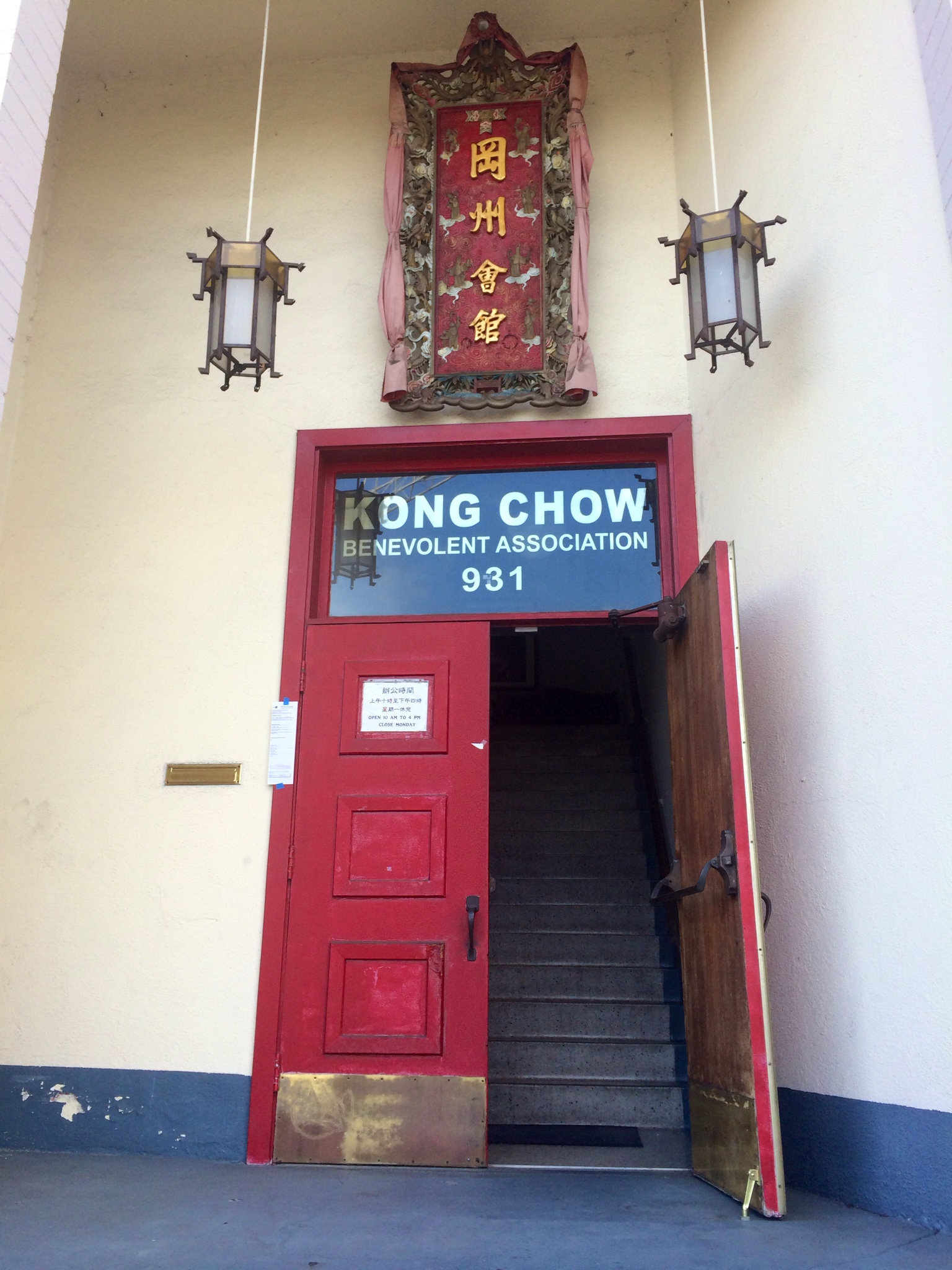To Live And Die In L.A. [Chinatown]
Minutes from Hollywood, Koreatown, and the San Gabriel Valley (the mecca of amazing Chinese food), it's no surprise that LA Chinatown is often overlooked by, well, everyone except for its residents and former residents. But this little town, consisting of just under a square mile, is rich with history and inspiring tales. Being exposed to LA Chinatown in various capacities for over 12 years, I enjoyed a very nice walk down memory lane during my last visit here.
A Bit of History. LA Chinatown, as we presently know it, is more accurately called the New LA Chinatown. The original Chinatown that existed since the late 1800's was built over by Union Station. Racism, bigotry and violence plagued the residents of Old Chinatown, mostly men of the poverty-stricken village of Toisan, China, who came during the gold rush to earn money to send home to their families. In 1871, the largest mass lynching in U.S. history took place in this little town, with over 17 Chinese men and boys hanged, some after suffering brutal torture. All the other Chinese residents were attacked or robbed. When this community was later uprooted to make way for the now-thriving Amtrak and Metro Station, evidence of this massacre became buried. Very few longtime Chinese-Angelenos, however, forget this dark, painful past.
A Tight-Knit Community. Relocated only a few blocks down to Broadway and Hill, the not-so-new Chinatown has been around since 1938. Now a shared community of 老華橋 (lo wah kiu or longtime overseas Cantonese) and 新移民 (sun yi mun or new Chinese immigrant families), the streets are often charmingly-littered with senior citizens on canes hiking to ABC Seafood or CBS Seafood for dim sum and mothers dropping off their children at the bilingual Castelar Elementary before heading off to the service center's English-immersion classes.
By noon, neighbors would crowd at the semi-outdoor markets to gossip with one another while selecting the freshest produce for the night's dinner. 節瓜 (jeet gwa/ Chinese melon), 蝦米 (ha mai/ dried shrimp), and 瘦肉 (sau yuk / lean pork) -- the ingredients for my favorite Cantonese slow-cooked soup -- can all be found in the markets here. For more flavor, pick up a pack of 江瑤柱 (gon yu chu / dried scallop) at Wing Hop Fung. Though expensive ($40-$100/lb.), two or three tiny dried scallops per pot of soup will suffice. Bring everything to a boil, add a couple slices of ginger, and simmer for an hour. This nutritious concoction carried me through my many years away from home.
To Eat In LA. I've never had a truly bad meal at any of the thirty or so restaurants here, and my friends--Chinese and non-Chinese alike--have all adamantly offered their favorites for me to include in this blog. But over the years, I've returned over and over to only a select few, so I'll be sharing those. My apologies to the Yang Chow enthusiasts.
Kim Chuy. Rated a B only after its recent renovation, this now spotless Chiu Chow restaurant boasts the best noodle soup in the city of LA. Though their selection is large, I vouch only for the 湯麵 (tong mien or noodle soup), particularly the Chiu Chow Special with a braised leg of duck with half rice noodle and half egg noodle. While many other Asian cultures enjoy their noodle soups by slurping the noodles directly from the bowl, Chinese people typically use chopsticks to place a mouthful of noodles into the spoon, soak the filled spoon with a bit of broth, and eat directly from the spoon. It makes a difference, since much of the flavor is derived from the broth.
Sam Woo/J&K Cafe. Located on the second floor of the Far East Plaza, this was my go-to for comfort food. Since both my parents are natives of Hong Kong, which was "leased" to the British from the 1800's to 1997, I grew up on HK-style western food, which ABC's fondly call "cafe food." It's diner food, though usually less greasy and better-prepared. One of my favorite lunchtime pasttimes in LA Chinatown was watching my friend devour the Mixed Grill, consisting of short ribs, a chicken steak, a pork chop, a hot dog, a fried egg, corn, broccoli, and a healthy helping of pasta, all for less than $10. Served sizzling hot, this four-in-one entree does not disappoint. Try the curries, the seafood pastas, the sizzling steak with black pepper sauce and baked pork chops over rice.
Full House. Like its counterpart Empress Pavilion, which recently closed but is rumored to re-open soon, Full House, a small restaurant on Hill Street, is considered an institution in LA Chinatown. For over 30 years, this restaurant has been a gathering place for locals to enjoy authentic and delicious Cantonese family-style meals. With only a day's notice, my friends Eddiboo L. and Mel A. summoned their entourage for a two-table banquet. Tomato beef jeen mien (which is crispier than the average chow mien), honey walnut shrimp, salt and pepper pork, sizzling rice soup, seafood tofu clay pot and the list goes on. The 滑蛋蝦仁 (waht daan ha yun) isn't just any scrambled egg dish. Maintaining the silkiness of the eggs while stir-frying with prawns is a skill to be acquired. At Full House, it's done properly. Open until 3 a.m.
Central Plaza and A Hobbyist's Dream. As mentioned, LA Chinatown is a shared community and during the 2005 redevelopmentof DTLA, a group of hipsters found their way to Central Plaza. Behind the statue of Dr. Sun Yet Sun (孫中山先生), the widely-revered co-founder of the KMT who hails from my maternal grandparent's village, Zhongshan, is a hipsters' haven, with trendy shops and the Grand Star Jazz Cafe (also Firecracker, a hip hop club, on Saturday nights). Just two years ago, my friends and I ran into celebrities inside another Central Plaza bar, Hop Louie. Hiding in Chinatown in an effort to avoid the paparazzi, the cast of Superbad (McLovin!) instead encountered the Southern California Chinese Lawyers' Association. That night, this combined group of geeks and nerds reclaimed the dance floor.
Down the street and hidden in a corner on the bottom level of the Bamboo Plaza is Neo Happyland, a toy / movie / music shop --one that I've frequented for the past decade. Carrying the newest action flicks and dramas from Hong Kong along with model kits and Hello Kitty collectibles from Japan, I've purchased items here for a fraction of the prices that I've seen at neighboring stores in Little Tokyo and San Gabriel Valley. The last one standing in Bamboo Plaza, whose businesses suffered upon the closing of Empress Pavilion, Mr. and Mrs. Wen continue to stock their shelves and try new forms of marketing. With 20 years of experience in importing these toys, they cater to true hobbyists. If you like gunpla or know what a gundam marker is, this is the place for you.
My L.A. (Chinatown) Story. Most Chinese-American kids will attest that our parents have an uncanny knack for finding Chinese restaurants near any amusement park, in any part of the country, at all hours of the day, and so Disneyland was how I first got to know LA Chinatown. But my true relationship with this town did not develop until I moved to LA. For the 12 years that followed, I saw this neighborhood in many different lights.
The Forgotten Population. I came to Los Angeles during a fairly fragile time of my life, after losing my grandfather to colon cancer just the year prior. When the weekly Hollywood and Beverly Hills mixers finally left me feeling a little out of touch with reality, I found myself signing up to volunteer at the LA Chinatown Senior Citizen's Center, making regular visits to this building, translating letters and taking down legal problems for the 婆婆s and 公公s (poh poh and gung gung, a universal way to address elderly Chinese women and men).
Click for a larger view, and you'll see the OG residents in the first senior center in Chinatown. These chatty ladies had their choice of apartments in the then-brand new building in the 80's.
In 2002, a frail 公公 named Poy L. walked into our legal clinic and asked if he was entitled to veteran's benefits. Inviting us upstairs into his small one-bedroom apartment at Cathay Manor, he showed us photos of him in decorated uniforms. He had fought on behalf of our country in Italy, earning not one but two, Purple Hearts. When his entire platoon was annihilated and his captain decapitated, Mr. L. went on to capture 15 German soldiers, earning medals for his bravery. But when he returned, the language barrier prevented him from obtaining full benefits and there was no Cantonese psychologist to assess him for PTSD. Interpreting for him in my grandfather's native dialect, we told and retold his story that year and, with the help of a nonprofit attorney, he was awarded decades of retroactive benefits and another $2,200 a month. He visited China for the first time with that money and returned with photographs, books and souvenirs. I think fondly of Mr. L. every time I pass Cathay Manor, and that experience defined for me what it means to be a legal advocate.
MLAC Pageant. The fall after graduation, I stood outside the gates of Castelar Elementary amongst dozens of other young Chinese women, awaiting our turn to convince the judges in a five-minute interview why we should be given an opportunity to run for the controversial position of ambassador of LA Chinatown (“Miss LA Chinatown”). Soon, I found myself as a finalist in this tradition, getting a behind-the-scenes-only understanding of the training and preparation that goes into the final show, as well as the code of conduct and rules by which we were required to abide for the months that followed.
For nearing five months, twenty of us young women met, weekend after weekend, in the small cafeteria of LA Chinatown’s Castelar Elementary School, where we exchanged lunches and stories, clumsily learned the steps to Beyonce's Crazy in Love, withstood daylong interactive seminars with speech coaches and image consultants, were educated on our heritage and the history of LA Chinatown, toured Chinatown's family associations and met their respective board members, and were even inspired by dignitaries, like U.S. Congresswoman (then Assemblymember) Judy Chu, who came and sat with us in the little elementary school chairs and told us that being Chinese girls born to immigrant parents served not as a hindrance to our professional and social development but rather an enhancement to our perspectives and what we bring to the table. Though our pageant later took place on a makeshift stage in a ballroom of the Hollywood Hilton, it was these moments shared in the little cafeteria on the campus of a LA Chinatown school that made the whole experience memorable for me. Most of us were probably too young to appreciate it at the time, but despite being a pageant, we learned a lot about our community through this experience.
An apartment complex behind Hill. The hanging laundry is common, since many families cannot afford washers and dryers.
A Legal Aid Attorney. By a strange twist of fate, just one month later, I was hired as a legal aid attorney to serve LA Chinatown, my first job out of law school. Being a legal aid attorney exposes you to the underbelly of the community. Though few venture up Alpine, it's still very much a part of LA Chinatown. Hard-working Chinese residents live there, earning minimum wage or less, often abused by the system, slumlords and business owners. My most memorable case was that of a young woman who recently immigrated from China. Her husband was abusing her. When she finally called the police, he told his false version of the situation in broken English and she, who spoke no English at all, was taken away in handcuffs. Facing criminal charges and restrained from returning to her own home, she opted not to stay at a battered women's shelter, instead sleeping nightly in a cold warehouse in Chinatown so that she could continue to work there during the day and see her sons during supervised visits. Her perseverance served her well, and she soon beat both the criminal case and won custody of her children. This case serves to remind me how deceiving appearances can be. A seemingly uneducated, monolingual immigrant woman may actually be the strongest person on the block.
If you've read this far, I hope that my review of this tiny town has provided a tiny glimpse of LA Chinatown. The residents here are a warm and welcoming people, and they care deeply for one another. If you speak the language, take the time to sit down and chat with one of the older ladies in front of Cathay Manor. Finally, here's a view from the Los Angeles County Public Defender's Office. This was my very last job in Los Angeles and every day, I had the privilege of seeing the entire LA Chinatown in all its glory.
![To Live And Die In L.A. [Chinatown]](https://images.squarespace-cdn.com/content/v1/5a70c23eedaed89d9f30271c/1518285475841-G6IIMG25Q2B76BQEMT98/2014-07-16-15-19-311.jpg)
















